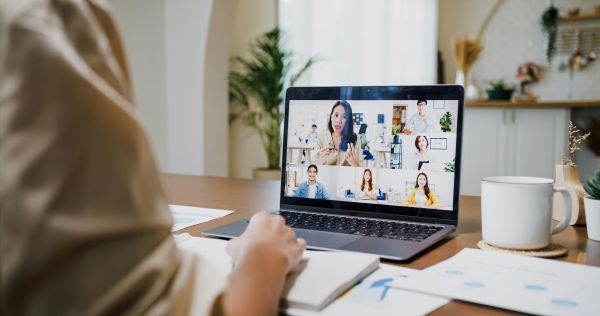Video calls have become commonplace. In many companies, they have taken over the role that traditional meetings once did. In fact, according to data from a recent Forbes article, 75% of business meetings are expected to occur through videoconferencing by 2024. It’s estimated that 300 million people use Zoom and an additional 300 million use Microsoft Teams daily for meetings.

Toronto recruiters like us use video calls all the time. We use them for interviews and to connect with employers and job candidates. Like millions of other people, I personally use them to meet with colleagues and clients and have meetings.
How you present yourself in online meetings is important. One essential component that can affect how you are perceived is your virtual background. Below, I’ll discuss the results of a study at Durham University’s Department of Psychology and how your background can affect your video call.
Can A Virtual Background For A Video Call Affect How You’re Perceived?
Yes, your virtual background can have a big impact on your perceived professional appearance according to a recent study – Virtual first impressions: Zoom backgrounds affect judgements of trust and competence.
“Virtual background could be considered an extension of professional appearance because personal spaces evoke character inferences,” says the study authors. “Virtual backgrounds have therefore been characterized as the new business suit.”
So, it’s important to think twice about what’s in your background if you do use a virtual background. And if you do use one, it’s important to choose one that is appropriate for your audience and industry.
What Is The Best Background For A Virtual Video Call?
The best background for a virtual video call are simple ones. It’s a good idea to keep your background neutral. According to the Durham study people with houseplants or bookcases in their backgrounds were perceived as more trustworthy and made better first impressions compared to those without.
What Virtual Backgrounds Should You Avoid?
Thinking about doing something funny as a background? What about just sticking to a plain white wall? These are considered backgrounds to avoid. According to the study, people are thought of as the least trustworthy when they use novelty images or simply show their living space as a background. A blurred living space behind them was viewed more favourably than a clear view of their home or a blank wall.
The study also revealed that showing your home environment in a professional setting, especially if it’s a bedroom rather than a home office or decorated with posters, is generally considered unprofessional.
Think of your virtual background as an extension of your business attire. It says something about your personally and professionally. So, make sure you choose an appropriate virtual background before your next online meeting.
More Advice For Video Calls and Interviews
7 Tips to Conduct a Video Interview That Will Help You Identify Top Talent
5 Tips to Help You Nail Your Video Job Interview
Managing a Remote Workforce? Use These 12 Tips to Avoid Proximity Bias





